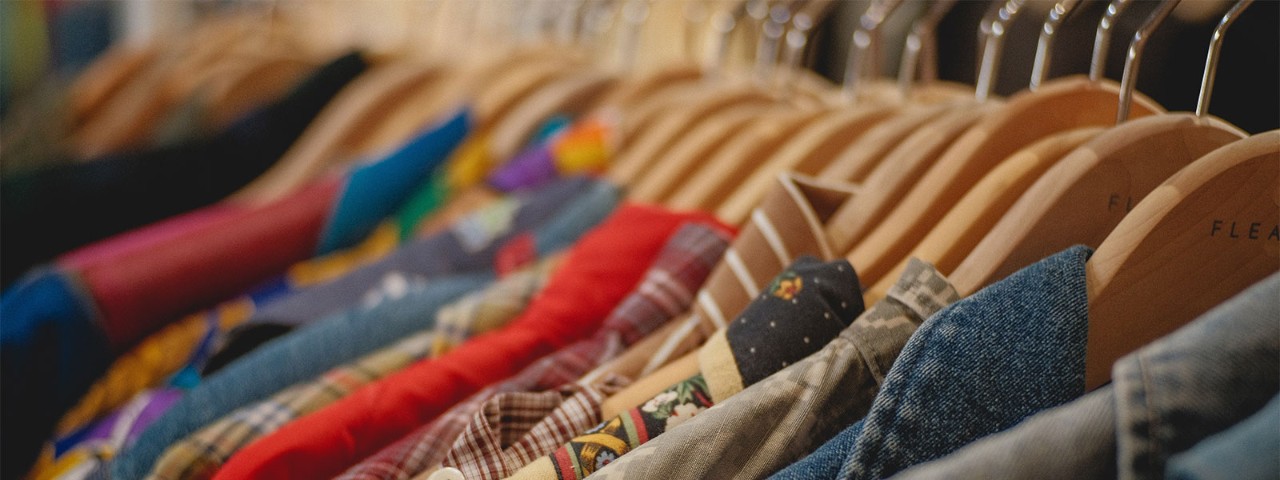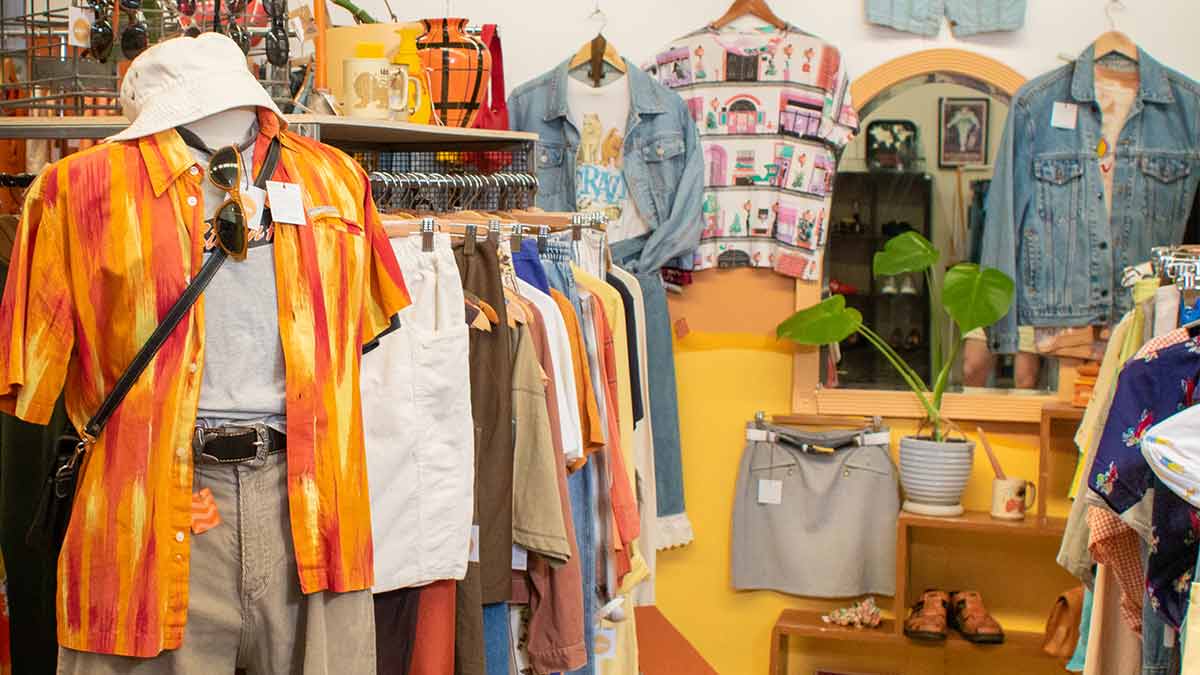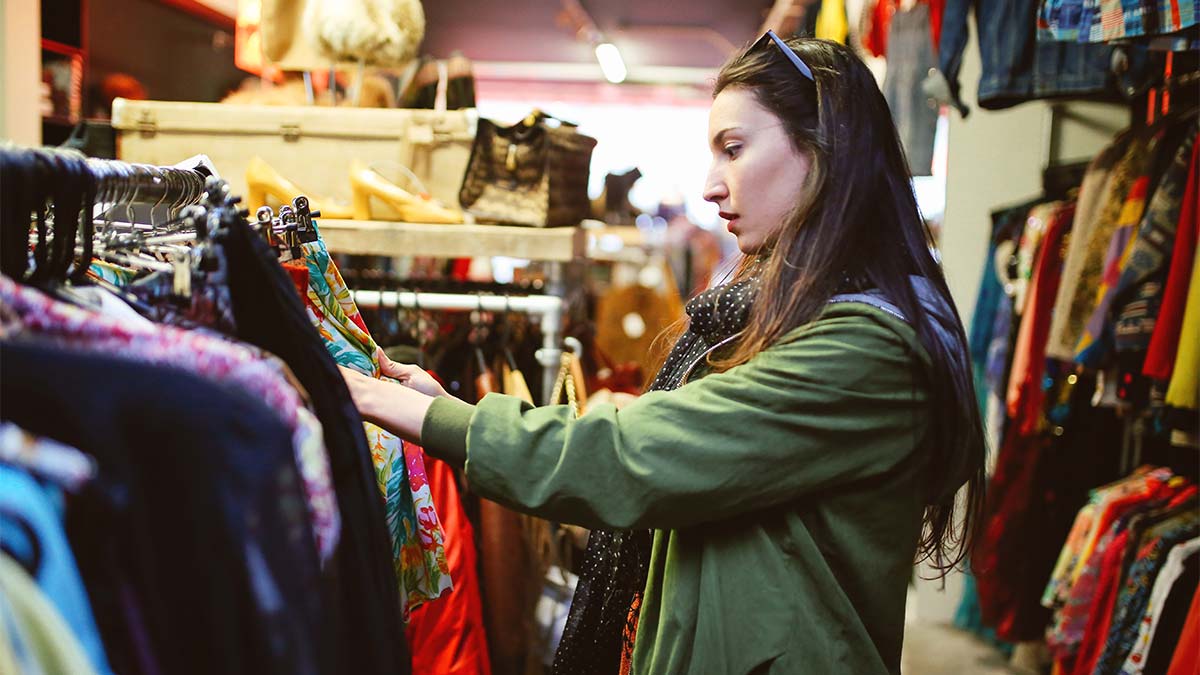Victorians are being urged to buy local this Christmas and support local businesses by keeping an eye out for presents stamped with the iconic ‘Australian Made’ logo.
Vintage clothing booms as eco-conscious consumers reject cheap fast fashion

With the fashion industry out-polluting the aviation and martime industries combined, it's no wonder why eco-conscious buyers are donning green.
If you haven’t already raided your parents or grandparents’ wardrobes, now’s the time with vintage clothing becoming the height of eco-friendly fashion, as consumers make more discerning shopping choices.
Doc Martens, Jag classics, and even vintage Target, are all highly sort after, with thrift shops and vintage specialty shops reporting a boom in business as young and old embrace the dual benefits of style and sustainability.
Jane Goodrich, the manager of the Castlemaine Vintage Bazaar, says sustainability has become a big issue for consumers and fashion trendsetters.
“People have a sense that the fashion industry tends to create a lot of landfill, and by purchasing second-hand items you’re not contributing to that,” she says.

Castlemaine Vintage Bazaar is a popular destination for eco-friendly clothing and 'Y2K' fashion. Image: supplied.
Why does sustainable clothing matter?
Cheap fast fashion is expensive for the environment. Each year the average Australian buys 27kg of clothing and gets rid of 23kg to landfill, according to a 2020 government report.
Sustainability Victoria (SV) says recycling and reusing clothing can break that cycle and save resources.
“Fast fashion is often made from poor quality materials and material blends, such as polyester and cotton, that make it cheap to produce but difficult to recycle,” the government agency says. “That means if the item cannot be donated or resold, it will often end up in landfill.”
In addition, textiles, clothing, and footwear production accounts for 20% of clean water pollution and around 8-10% of greenhouse gas emissions worldwide – which is more than all international flights and maritime shipping combined.
As part of the Melbourne Fashion Festival, Sustainability Victoria is running a free digital and live event, Purchasing Power for the Planet, on March 9 (4.30pm-6.30pm) for those interested in finding out more about sustainable clothing.

The rise of fast fashion has made consumers realise that older clothes are often made better. Image: Getty
What clothing is considered vintage?
The fashion industry classifies vintage clothing as items that have been in use for more than 20 years. But the gap is closing.
“Ten to 15 years ago the items that were highly sought after were from the ’50s and ’60s, like that classic ’50s frock with a gathered waist,” Jane says. “That has changed now, and we’re finding the clothing that’s selling the most is what’s called ‘Y2K clothing’.”
Dylan Wiehahn, a manager at the Castlemaine Vintage Bazaar and co-owner of WARM store, started selling vintage clothing five years ago and has seen a big change in fashion tastes.
“The shift in trends is happening so fast it can be hard to keep up,” he says. “We have seen the demand for clothing shift from the ’80s and ’90s to the ’00s, and we are now even selling lots of items from the early 2010s.”
He says the rise of fast fashion has made customers realise that older clothes are often made better.
“There’s still plenty of love for other vintage clothing too, going right back to the early 20th century. I think everyone still digs the ’70s. Every weekend I see jackets from the ’70s that look brand new. It’s a good time to be in the vintage clothing business.”

Demin jackets from the 1980s are highly sort after. Image: Unsplash.
How can vintage clothing save (or make) you money?
SV says second-hand items are cheaper across the board.
“As consumers we can also make money in the second-hand market by selling quality items we no longer wear,” the agency says.
Jane says there is a lot of demand for good quality second-hand clothing, especially clothing made in Australia before the mid-1980s, when the decline of local textile industry coincided with the rise of offshore manufacturing.
“People will often check the tags for the country of origin, and there’s a bit of a marker for when brands such as Katies, Country Road and Jag started producing offshore, that’s when the quality dropped, and it is less sort after.”
These items are usually cheaper than their original sale price and outlive fast fashion, making them value for money. Having good quality clothing can help minimise the amount of clothing items you buy, which is also good for the hip pocket.
And lastly, that old Jag jacket at the back of your wardrobe (or your parent’s wardrobe) may be worth selling rather than sending to landfill.
“Fashion is very fluid,” Jane says. “I don’t think Doc Martens have ever gone out of fashion. They still get snapped up.”


